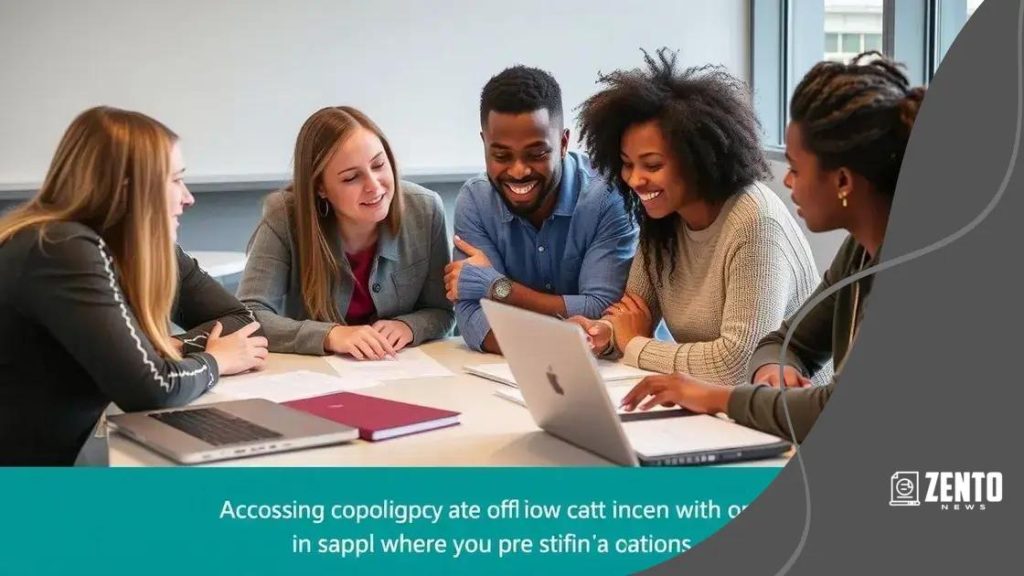Student debt help grows: essential resources to explore

Anúncios
Managing student loans effectively involves creating a budget, understanding loan types and repayment options, and utilizing local resources for guidance to ensure timely payments and reduce financial stress.
Student debt help grows as many are seeking ways to tackle their financial burdens. It’s a topic that affects countless individuals, and understanding your options is crucial. Let’s dive into the resources available to help you navigate this journey.
Anúncios
Understanding student debt challenges
Understanding student debt challenges is crucial for anyone pursuing higher education. Many students enter college with dreams and aspirations but face overwhelming financial burdens from loans. It’s important to recognize common issues that can arise when dealing with student debt.
Common Challenges
The road to managing student loans often comes with unexpected hurdles. Here are some common challenges:
- High interest rates: Many loans carry high interest, which can significantly increase the total amount owed over time.
- Loan repayment plans: With multiple repayment options available, it can be confusing to choose the right one.
- Debt accumulation: Balancing education costs with living expenses can lead to accumulating more debt than anticipated.
Moreover, understanding your loans is a key part of the process. Federal loans differ from private loans, and each has unique terms. Keeping track of repayment dates and communicating with lenders is essential.
Anúncios
Impact on Financial Health
Student debt doesn’t just affect current finances; it can have long-term implications. Many graduates find it challenging to save for other goals like buying a home or starting a family. The impact of student loans on personal finance can’t be underestimated.
Awareness of your financial health is the first step towards responsible management. Setting a budget that accommodates loan payments, along with other expenses, can help mitigate the impact of student debt.
Types of student debt relief options
Exploring types of student debt relief options is essential for borrowers seeking to lessen their financial burden. Knowing what options are available can empower individuals to make informed choices about their loans.
Federal Loan Forgiveness Programs
One of the most popular types of relief is through federal loan forgiveness programs. These programs offer borrowers a chance to have their loans partially or fully forgiven after meeting specific criteria. Here are some key programs:
- Public Service Loan Forgiveness (PSLF): Designed for those working in qualifying public service jobs, borrowers can have their balance forgiven after 120 qualifying payments.
- Teacher Loan Forgiveness: Teachers in low-income schools may qualify for forgiveness up to $17,500.
- Income-Driven Repayment (IDR) Forgiveness: Borrowers in IDR plans can have their remaining loan balance forgiven after 20 or 25 years of payments, depending on the plan.
Understanding these options is vital, as the specific criteria must be met to qualify for forgiveness. Each program has its requirements, including employment type, payment timeframes, and loan type.
State and Local Programs
In addition to federal programs, many states have their own debt relief initiatives. These programs often cater to specific professions or are targeted toward residents working in high-demand areas. For instance, some states offer loan repayment assistance for nurses, doctors, or teachers. Researching these local programs can reveal additional opportunities for debt relief.
Don’t overlook private options as well. Some private loan lenders offer refinancing or hardship programs that can provide relief in times of financial instability. It’s crucial to communicate with the lender to understand available options thoroughly.
How to apply for student debt forgiveness programs

Applying for student debt forgiveness programs can seem daunting, but understanding the steps involved simplifies the process. Many borrowers feel overwhelmed, yet knowing how to proceed can make a huge difference.
Gather Necessary Documentation
The first step in applying for loan forgiveness is to gather your documents. You will need:
- Your loan information, including the type of loans you have.
- Proof of employment, especially for programs like Public Service Loan Forgiveness.
- Tax return documents that may be required for income-driven repayment plans.
Once you have all your necessary documentation, the next phase involves submitting your application. Being organized will help streamline this process.
Fill Out the Application
To apply, you need to complete the correct application form for the forgiveness program you qualify for. Each program has its specific requirements. For example, the Public Service Loan Forgiveness requires the completion of the PSLF application. It’s crucial to follow each step closely to avoid any delays.
Be prepared to provide details about your employment history and your loan types. This ensures that you meet all eligibility criteria. After you submit your application, it may take time for the review process.
Stay in Contact
After applying, staying in contact with your loan servicer is essential. They can provide updates about your application status. Don’t hesitate to reach out with any questions. Keeping communication channels open helps ensure that you remain informed about any additional steps or requirements.
Lastly, it is wise to keep copies of everything you submit. This way, you have a record in case of any discrepancies or follow-ups needed. By staying organized and informed, applying for student debt forgiveness can be a more manageable task.
Finding local resources for financial guidance
Finding local resources for financial guidance is an important step for anyone dealing with student debt. There are various options available that can help you manage your finances and navigate the complexities of loans.
Community Organizations
Many community organizations offer resources for financial advice. They may provide workshops, one-on-one counseling, or seminars to help individuals understand their financial situations better. Seek out non-profits that focus on educational finance.
- Local credit unions: These institutions are often more community-focused and may offer financial literacy programs.
- Consumer advocacy groups: These organizations can provide information on managing debt and protecting your credit.
- Universities or colleges: Many institutions offer free resources for current and former students.
These resources are valuable for anyone looking to gain control of their financial future. Often, they provide insights tailored to your specific needs.
Online Directories
Another excellent way to find financial resources is through online directories. Websites such as 211.org can connect you with local resources based on your zip code. You can find a range of services, from legal advice to financial counseling. These directories make searching for help easier than ever.
Additionally, state or local government websites may list financial assistance programs available in your area. Make sure to explore these options—it can lead to discovering helpful resources you may not have known existed.
Networking and Referrals
Networking can also be an effective way to find local financial resources. Speak with friends, family, or coworkers. They can share their experiences with financial advisors, debt relief services, or even local workshops they have found helpful. Getting referrals from people you trust can lead you to reliable support.
Connecting with local financial experts can ensure you receive tailored advice that suits your particular situation. Seeking guidance from knowledgeable sources helps demystify the financial journey and provides you with the tools you need.
Tips for managing student loans effectively
Managing student loans effectively is key to ensuring financial stability after graduation. Many borrowers struggle with payments and loan management, but following a few helpful tips can make a significant difference.
Create a Budget
The first step in managing your loans is to create a realistic budget. A budget helps you see where your money goes each month. Start by listing all your income sources and then track your expenses. Include loan payments as a fixed expense, so you prioritize them in your monthly plan.
- Prioritize essentials: Focus on necessary expenses like housing, food, and loan payments.
- Set a savings goal: Even in tight financial situations, try to save a small amount each month.
- Use budgeting tools: Consider apps or spreadsheets to help track your spending.
With a clear budget, you’ll be less likely to miss payments and more equipped to manage your loans.
Understand Your Loans
Another important tip is to fully understand your student loans. Types of loans can vary significantly; federal loans typically have different terms compared to private loans. Knowing the specifics of your loans, including interest rates, repayment plans, and due dates, is crucial for effective management.
Review your loan agreements and keep all documents organized. This knowledge allows you to take action if you ever struggle with payments. If you’re not sure about your loans, reach out to your loan servicer for information and assistance.
Consider Repayment Options
There are various repayment options available, and you should choose one that fits your financial situation. Different plans offer flexibility, so explore them thoroughly. Options such as income-driven repayment plans may allow you to reduce payments based on your income.
Additionally, don’t forget to keep an eye on loan consolidation or refinancing. These methods might lead to lower interest rates or simplified payments. However, weigh their pros and cons carefully, as not all options suit every borrower.
By managing your loans through budgeting, understanding their terms, and selecting appropriate repayment options, you can stay on top of your financial obligations and reduce stress regarding student debt.
FAQ – Frequently Asked Questions about Managing Student Loans
What is the best way to budget for student loan payments?
Creating a monthly budget that includes all your expenses helps prioritize your loan payments and avoids missing deadlines.
How can I find out what type of student loans I have?
You can check your loan details by logging into the National Student Loan Data System (NSLDS) or contacting your loan servicer directly.
What options are available for repaying student loans?
There are various repayment options, including standard, graduated, and income-driven plans. Each has distinct features to accommodate different financial situations.
How can community resources help with managing student loans?
Community organizations often offer free workshops and individual counseling to help borrowers understand their loans and develop effective management strategies.





